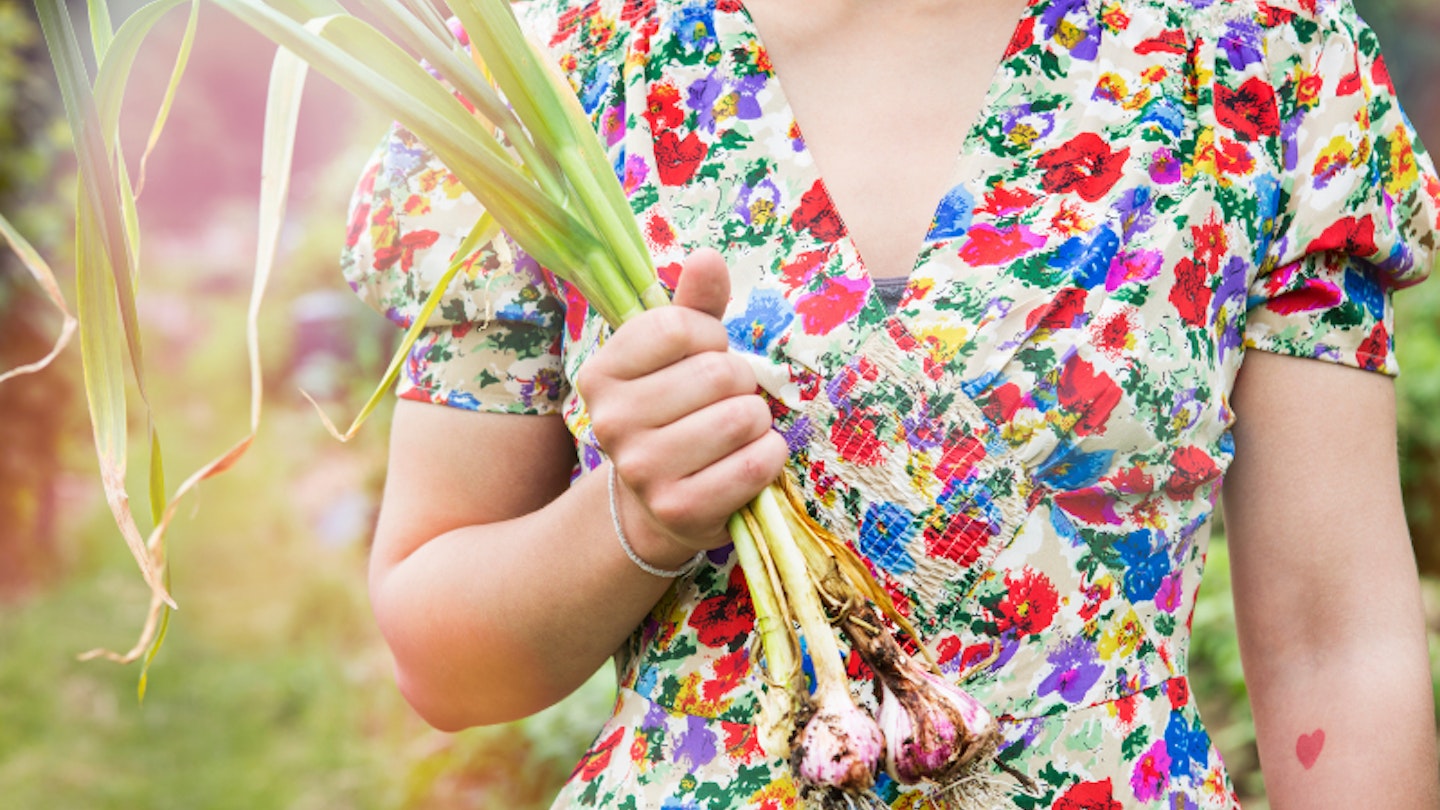An ingredient used in many dishes, garlic is a store cupboard staple. But did you know it's actually pretty straight forward to grow your own?
Gardening expert from Hayes Garden World Angela Slater fills us in on everything you need to know about how to grow garlic.
Where should I plant garlic?
Garlic should be grown in a sunny position either in the ground or a large container in well-draining soil. You shouldn’t plant garlic in soil that has previously grown any other member of the allium family; onions, garlic or leeks, as you could have one of the onion diseases lying dormant in the soil.
In what conditions should I plant garlic?
Before planting, add some homemade compost or well-rotted farmyard manure, at least 2 years old, as the cloves need a good rich growing medium. Also add a general-purpose fertiliser such as blood, fish and bone or a specialist onion fertiliser.
When to plant garlic
Garlic can be planted either in autumn or spring; many growers are of the opinion that garlic planted in the autumn gives a better crop, possibly due to going through a cold period. If you have heavy clay or wet soil don’t plant into the ground in autumn as they are almost certain to rot; either plant into large modules or individual small pots. Plant into the ground in spring when the ground has dried and warmed up a little.
How to plant garlic
Carefully split the whole bulb into individual cloves and plant so the tip is 1” (2.5cm) below the soil surface. Plant 6” (15cm) apart in rows 12” (30cm) apart. If planting in a container use one at least 12 – 18” (30 – 45cm) in diameter.
.png?auto=format&w=1440&q=80)
Can you plant supermarket garlic?
No, always buy your garlic bulbs from a reputable supplier as you don’t know the variety of supermarket garlic, it could be specifically bred to grow in a completely different climate to the UK. Supermarket garlic is also not certified virus-free.
How to care for garlic
Garlic is one of the easiest crops to care for, requiring almost no regular maintenance, just keep your patch weed-free so the cloves are not competing for nutrients. Keep it just damp, don’t let it dry out or become sodden; if planting in a container, use a well-draining peat-free compost.
How to harvest garlic
Timing is all-important when it comes to harvesting the garlic; too soon and the bulbs will be too small and not store well, too late and they will burst from their skins and become vulnerable to rot and disease. Test a couple of bulbs once a few leaves have started to go brown. Use a garden fork to harvest as pulling up can result in the bulb and stalk separating.
How to store garlic
Cure the garlic once you have harvested it by keeping it cool and dark for 3 – 4 weeks after lifting. Brush off the soil, don’t wash, and leave the tops on the bulb. It is important that you keep a good airflow around the bulbs, either hang in bunches of 8 – 10 bulbs or lay out on mesh.
Once they have dried take off the loose papery skins, the roots and the dried tops. If you have grown soft neck garlic leave on the tops and plait into a braid, alternatively store in a mesh bag, such as those which contain oranges in the supermarket. Store where there is good air circulation at a temperature of 32 – 40F (0 – 4.5C).
.png?auto=format&w=1440&q=80)
What garlic varieties can I grow?
There are two main types of garlic; hardneck and softneck.
Hardneck varieties don’t store as well as the softneck but they do have an edible flower stem, unlike the softneck which doesn’t produce this stem, often called a ‘scrape’. Cut off this stem to allow the plant to put all its energy into producing the bulb. So, if you are going to be using the bulbs fairly quickly and like using the stems in salads then give the hardneck varieties a try; or you can substitute these stems with wild garlic or garlic chives. Elephant Garlic is one of the most popular hardneck varieties, producing a large mild bulb that is delicious roasted or try Carcassonne Wight.
Of the softneck varieties, Germidour and Wight Cristo are the most popular and problem-free. The softneck Early Purple Wight is a lovely colour and one of the first of the season, however it does not store well so has to be used within 3 – 4 months of harvesting.
What common garlic planting problems should I be aware of?
One of the commonest planting problems is not keeping the cloves in an evenly watered compost; if it becomes too dry it will bolt and produce a flower before the bulb develops.
Also keep on top of the weeding otherwise they will take all the nutrients from the garlic and the resulting bulbs will be very small.
Rust and white rot can also be a problem if you are growing them in an area that has previously grown alliums. There is no cure for these problems, just don’t grow alliums in the area for at least another 3 – 4 years as the diseases lie dormant in the soil.
The symptom of rust is small reddish patches on the leaves and white rot affects the roots and eventually the bulb. As soon as the cloves start to sprout, they can be pulled up by birds so cover with some horticultural fleece or bird netting as soon as the shoots appear.
